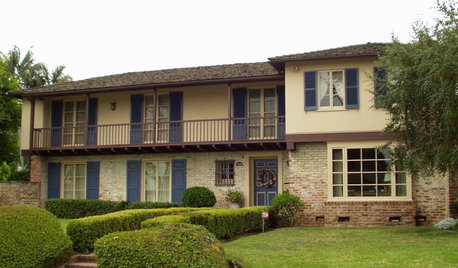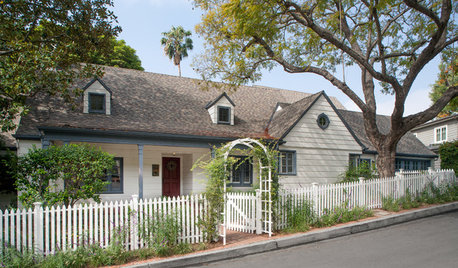1930's Colonial.... advice
sharknrg
14 years ago
Featured Answer
Sort by:Oldest
Comments (9)
kimkitchy
14 years agoRelated Professionals
Ossining Kitchen & Bathroom Designers · Saint Peters Kitchen & Bathroom Designers · Wentzville Kitchen & Bathroom Designers · Bethel Park Kitchen & Bathroom Remodelers · Channahon Kitchen & Bathroom Remodelers · Omaha Kitchen & Bathroom Remodelers · Toledo Kitchen & Bathroom Remodelers · Walnut Creek Kitchen & Bathroom Remodelers · South Jordan Kitchen & Bathroom Remodelers · Wilmington Island Kitchen & Bathroom Remodelers · Brushy Creek Architects & Building Designers · Dayton Architects & Building Designers · Four Corners Architects & Building Designers · Seal Beach Architects & Building Designers · Seattle Architects & Building Designerspowermuffin
14 years agokimkitchy
14 years agosherwoodva
14 years agomainegrower
14 years agomacv
14 years agoslateberry
14 years agokimkitchy
14 years ago
Related Stories

MEDITERRANEAN STYLEHouzz Tour: Beauty Restored to a 1930s Spanish Colonial Revival Home
Original details have been painstakingly preserved or reproduced in this Santa Barbara home
Full Story
KITCHEN DESIGNSmart Investments in Kitchen Cabinetry — a Realtor's Advice
Get expert info on what cabinet features are worth the money, for both you and potential buyers of your home
Full Story
HOUZZ TOURSMy Houzz: 1930s Outside, Midcentury Modern Inside
Saarinen and Noguchi furnishings in a traditional home? A Dallas decorator went for it, with beautiful results
Full Story
ARCHITECTURERoots of Style: Colonial Monterey Sets the Stage for Unique Design
French, Spanish and English features mix in enigmatic Monterey-style architecture. Here's how to recognize this type of home
Full Story
HOUZZ TOURSMy Houzz: Cozy Updates for a 1908 New York Colonial
Slow but steady updates transform an upstate New York farmhouse into a charming home for 4
Full Story
BOOKSBook to Know: 'Long Island Modernism 1930-1980'
Photographs mix with social history from the architectural highlights of Long Island's suburbanization
Full Story
TRADITIONAL HOMESHouzz Tour: A Family-Friendly Home Keeps Its 1930s Charm
This updated Los Angeles home is full of cozy nooks and period details, giving it lots of vintage appeal
Full Story
HOUZZ TOURSHouzz Tour: Updates Honor a 1930s Cottage's History
The facade stays true to the original, but inside lie a newly opened layout, higher ceilings and 600 more square feet of space
Full Story
REMODELING GUIDESRenovation Ideas: Playing With a Colonial’s Floor Plan
Make small changes or go for a total redo to make your colonial work better for the way you live
Full Story
KITCHEN OF THE WEEKKitchen of the Week: Storage Galore in a 1920s Colonial
Pullouts, slots, special drawers and more — this customized kitchen packs in plenty of organizing solutions
Full StoryMore Discussions










Billl